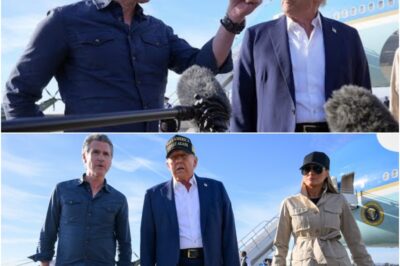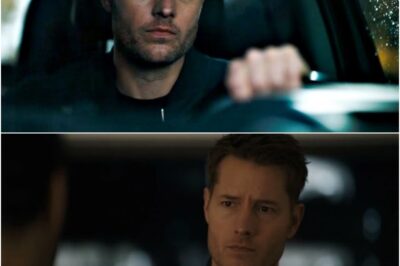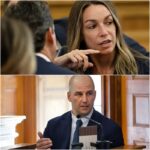Kennedy’s Chalkboard Revolution: How a Conservative Senator Won Over a Liberal Campus

I. The Challenge
Hamilton Hall at Westford University, Virginia, was packed to the rafters. The event, “Mathematics and Public Policy,” had drawn a crowd that buzzed with anticipation and skepticism. The autumn air mingled with the glow of media cameras and the low hum of students, some eager, others bracing for a showdown.
Into this progressive stronghold strode Senator John Neely Kennedy, silver hair tousled, gray suit simple, smile folksy but eyes sharp. At 74, Kennedy was a conservative icon, famous for his homespun wit—once quipping, “I’d rather walk barefoot through a swamp than disappoint a voter.” His reputation preceded him, and not everyone was pleased.
At the podium stood Professor Samuel Whitaker, a dignified liberal with salt-and-pepper hair and a mathematician’s precision. Whitaker, known for his biting critiques of conservative “anti-intellectualism,” eyed Kennedy with cool detachment. He’d invited the senator for a reason—and it wasn’t to flatter him.
“Today,” Whitaker began, his voice resonant, “we’re honored to welcome Senator Kennedy. His oratory skills are renowned, but whether he can conquer mathematics—the language of truth and logic—we shall see.”
A hush fell. Whitaker turned to the chalkboard and, with a flourish, wrote a complex compound interest problem, its variables overlapping like a maze. The trap was set.
@WestfordWatch: “Packed house for Kennedy v. Whitaker. Betting the prof wipes the floor with him. #MathShowdown”
II. The First Problem
Kennedy stepped to the board, twirling a piece of chalk. “Balanced Louisiana’s budget,” he drawled. “This challenge doesn’t scare me.”
Students held their breath. Cameras zoomed in, ready to capture a stumble.
He eyed the problem, then turned to the class. “Folks, this is like calculating interest on a big loan—but with a bit of spice.” A ripple of laughter broke the tension. Whitaker’s arms tightened over his chest.
Kennedy wrote out the formula for bond valuation, explaining each variable with the clarity of an experienced treasurer. “Imagine buying a bond to build a school. You’ve got to calculate so you don’t lose a student or your shirt.”
Emily, a liberal student in the front row, scribbled notes, skepticism etched on her face. Jake, a Kennedy fan, nodded eagerly. Sarah, a shy engineering student, watched in awe as the senator made the math accessible.
With steady hands, Kennedy plugged in the numbers: $15 million bond, 3.8% interest, 20-year term. He broke down the compound interest, explaining, “It’s like snow rolling downhill—the longer it goes, the bigger it gets.”
He boxed his answer: “Present value: $12.115 million. Future value: $28.42 million.”
The room was silent. Then, applause erupted—hesitant at first, then thunderous.
@CampusLive: “Kennedy just solved Whitaker’s ‘impossible’ problem. Even the skeptics are clapping. #MathMagic”
Whitaker scrutinized the board, searching for a mistake. There was none.
“Correct,” he admitted, voice strained.
III. Raising the Stakes
“Don’t celebrate yet,” Whitaker snapped. “We’re just getting started.”
He wrote a new problem: a probability challenge involving market volatility and lognormal distributions—university-level finance at its trickiest.
Emily, still skeptical, stood up. “How do we know he wasn’t prepped for this? The last one looked too perfect.”
Whitaker seized the moment. “Fair point. Let’s pick a random problem.” He flipped open a textbook, landing on a gamma distribution in credit risk analysis.
Kennedy grinned. “Young lady, I like your skepticism. Keeps me sharp.”
He walked to the board, explaining the gamma function as if teaching a story. “It’s like predicting storms in Louisiana—you need to know when they’ll hit.” He solved the integral, boxed the answer, and stepped back.
Again, applause filled the room—louder than before.
@JakeForMath: “He’s doing math like it’s a campfire story. This is wild. #KennedyLogic”
Whitaker, pride wounded, checked the steps. Flawless.
IV. The Ultimate Test
Whitaker, now visibly irritated, declared, “If you solve this, I’ll resign right here.” The room gasped.
He wrote a monstrous budget optimization problem—nonlinear differential equations, matrix constraints, exponential functions, all swirling in a storm of variables. “This isn’t a game, Senator. This is reality.”
Students muttered, “No one can solve this.” Jake still believed. Emily leaned forward, expectation replacing skepticism. Sarah flipped through her notebook, lost.
Kennedy studied the board, then turned to the class. “This isn’t about beating the professor. It’s about showing you all that when things get complex, we need each other more than ever.”
The room froze. Whitaker thought Kennedy was dodging, but the senator instead invited the class to join.
“Who wants to solve this with me?” he asked.
Sarah raised her hand. “We could start by separating healthcare costs into a standalone function.”
Kennedy beamed. “That’s as good as a perfectly spiced gumbo.” He wrote her idea on the board.
Jake jumped in. “We could use a matrix to balance education and infrastructure.”
Kennedy drew the matrix. “Like playing poker with a budget.”
Emily, emboldened, raised her hand. “But if we prioritize healthcare, won’t infrastructure suffer?”
Kennedy nodded. “That’s why we find the balance so everything survives.” He added her constraint.
Sarah spoke again, “We forgot inflation.”
Kennedy revised the function, incorporating inflation. Applause broke out. Other students joined, tossing out ideas. Kennedy praised each contribution, turning the chalkboard into a collective masterpiece.
Whitaker, arms crossed, watched as his trap became a group project. Kennedy, far from stalling, was inspiring.
The final answer: 35% healthcare, 30% education, 25% infrastructure, 10% reserve.
@SarahMathWins: “Never thought I’d love math, but Kennedy made me believe I could do it. #MathForAll”
V. The Handshake
Whitaker checked the solution. No errors—only creativity and collaboration.
He turned to Kennedy, voice low but sincere. “Senator, I was wrong to think you were just a politician with a silver tongue. You didn’t just solve the problem—you sparked the intellect and spirit of this class.”
Kennedy stepped forward, hand extended. “Professor, we both want to inspire these kids. Today, we both learned something.”
Whitaker hesitated, then grasped Kennedy’s hand. The room exploded in applause. Emily clapped without hesitation. Jake punched the air. Sarah smiled, her confidence shining.
@EmilySeesClearly: “Didn’t agree with Kennedy’s politics, but today he proved me wrong. Biases can be shattered. #Respect”
A reporter whispered, “This handshake will hit every headline.”
VI. The Viral Wave
Clips from the lecture—Kennedy guiding the class, the handshake—spread across social media like wildfire.
@CampusClips: “This is the math class every American needs to see. #KennedyLogic”
@LogicLeague: “He didn’t just solve math. He solved a divided classroom. #Unity”
@SkepticToFan: “I came for a takedown, stayed for a lesson in humility and collaboration.”
A Virginia high school teacher shared the video: “Using this to teach my students about teamwork and humility.”
Universities across the country reached out, inviting Kennedy to speak on applied mathematics and leadership.
@BatonRougeEd: “Your way of making math a practical lesson is what our students need. Please come.”
VII. The Aftermath
Sarah enrolled in a financial math course, determined to pursue the subject she once feared. “If Kennedy believed I could do it, I’ll try,” she told friends.
Jake, once focused only on politics, began reading books on logic, realizing intellect could unite rather than divide.
Emily wrote an essay analyzing how Kennedy dismantled her biases—later published in a student magazine.
Whitaker, now praised for his humility, reflected, “Teaching is learning from students and even rivals.” He began drafting new lectures focused on practical math, inspired by Kennedy.
The chalkboard, still covered in equations, became a symbol of unexpected unity.
@MathMatters: “Kennedy and Whitaker proved that intellect and humility can bridge any divide.”
VIII. The Lesson
The story of Senator John Neely Kennedy and Professor Samuel Whitaker at Westford University is a parable for our polarized times. Kennedy, a conservative, entered a liberal stronghold and earned respect not by winning, but by inviting others to join him. Whitaker, his pride wounded, found the courage to admit fault and shake his rival’s hand.
The lesson? In a society fractured by ideology, intellect and humility can build bridges. Kennedy’s collaborative approach showed that even the hardest problems—mathematical or social—are solvable when we work together.
@UnityNow: “This wasn’t just a math duel. It was a masterclass in overcoming division.”
IX. Epilogue
Kennedy returned to Louisiana, but the ripples of that day kept spreading. Whitaker, once intent on humiliation, found his passion for teaching rekindled. Sarah, Jake, and Emily carried new confidence and open minds into their futures.
The chalkboard, with its unerased solution, stood as a silent witness to a day when intellect and humility triumphed over division. The handshake between Kennedy and Whitaker became an enduring symbol—proof that even in the most unlikely places, unity can be found.
News
BREAKING: Ex Massachusetts Trooper Michael Proctor Demands Job Back After Karen Read Trial Ends and It’s Stirring Major Backlash
Michael Proctor laughs at Karen Read corruption allegations as he fights to get job back Lead investigator says corruption accusations…
Ivanka Trump Turns Heads With Her Jaw-Dropping Dress In New York
Ivanka Trump (Photo Via Instagram/@ivankatrump) Ivanka Trump isn’t exactly blending into the background these days. Whether she’s attending high-profile sporting…
BREAKING: California Governor Fires Back After Court Lets Trump Control National Guard in LA and Says Ruling Strips His Immunity from Review
California Governor Gavin Newsom claims ‘Trump is not a king’ after crucial National Guard control case California governor attempts to…
Mom, didn’t you tell me you drank milk while pregnant? Who’s the father? The biggest question of Ginny and Georgia season 3 has been answered
Mom, didn’t you tell me you drank milk while pregnant? Who’s the father? The biggest question of Ginny and Georgia…
Tracker Renewed for Season 3: What’s Next for Justin Hartley’s Hit Drama?
Tracker Renewed for Season 3: What’s Next for Justin Hartley’s Hit Drama? Tracker Continues Its Reign as CBS’s Most-Watched Series…
MUST SEE: Oliver Stark Says He’s “Very Honored” to Play Bis3xual Buck in 9 1 1 as He Celebrates Pride Month and Fans Are Loving It
Oliver Stark Celebrates Pride Month By Saying He’s “Very Honored” To Play Bis3xual Buck In 9-1-1 9-1-1 actor Oliver Stark,…
End of content
No more pages to load












